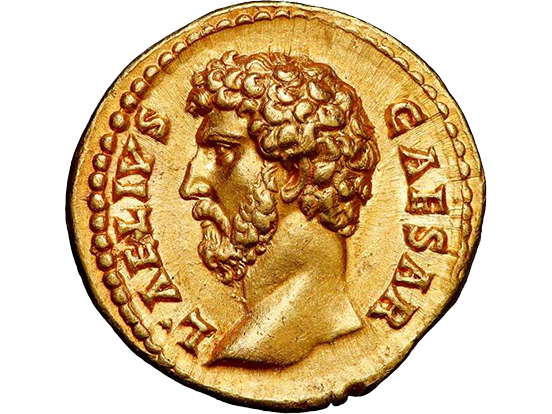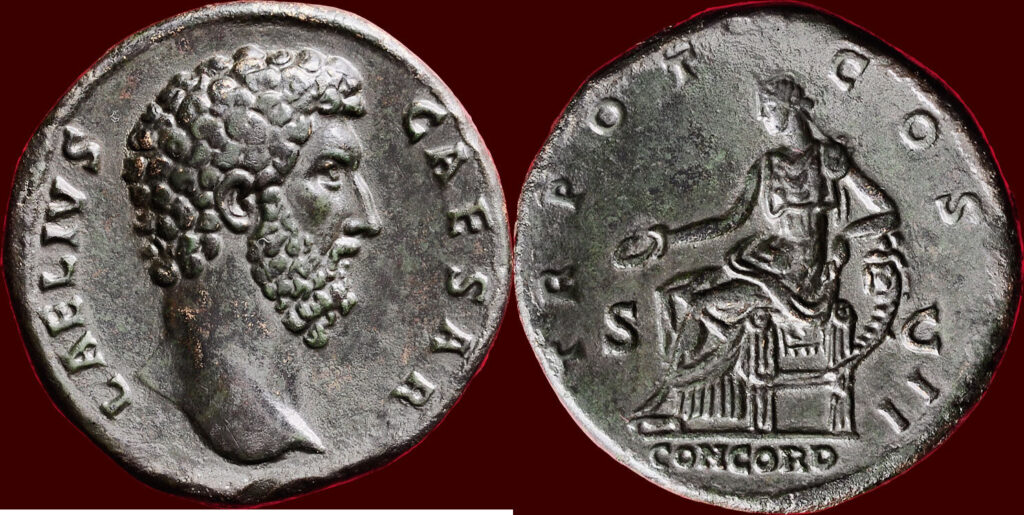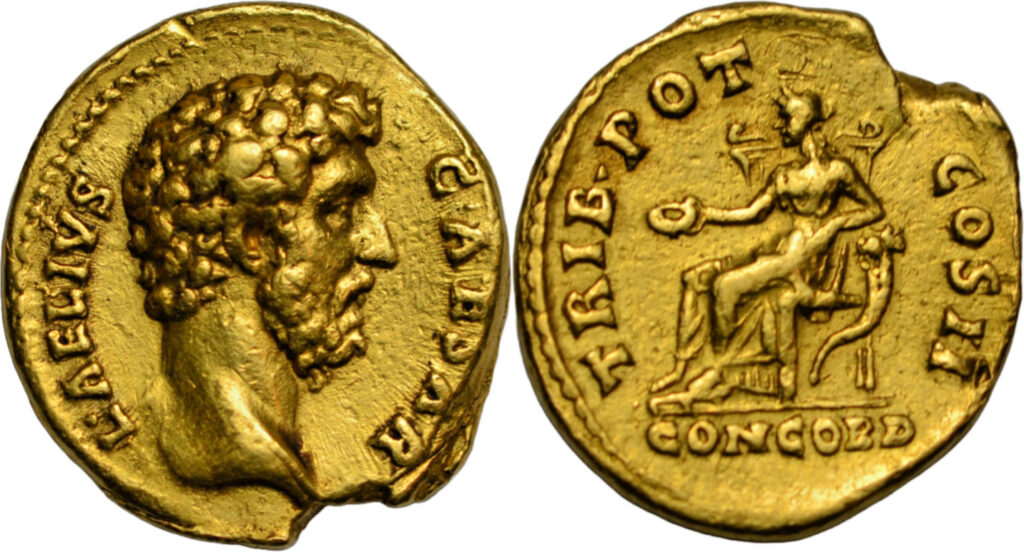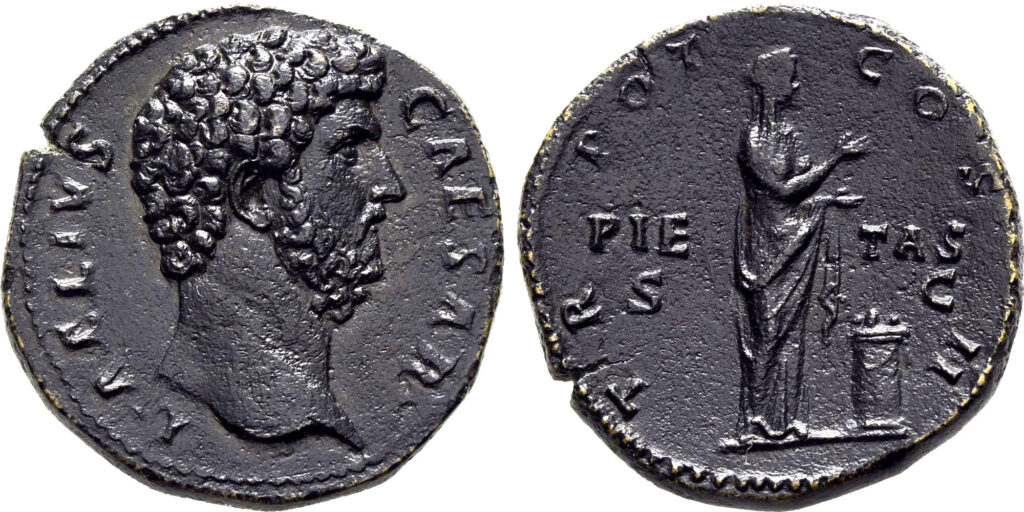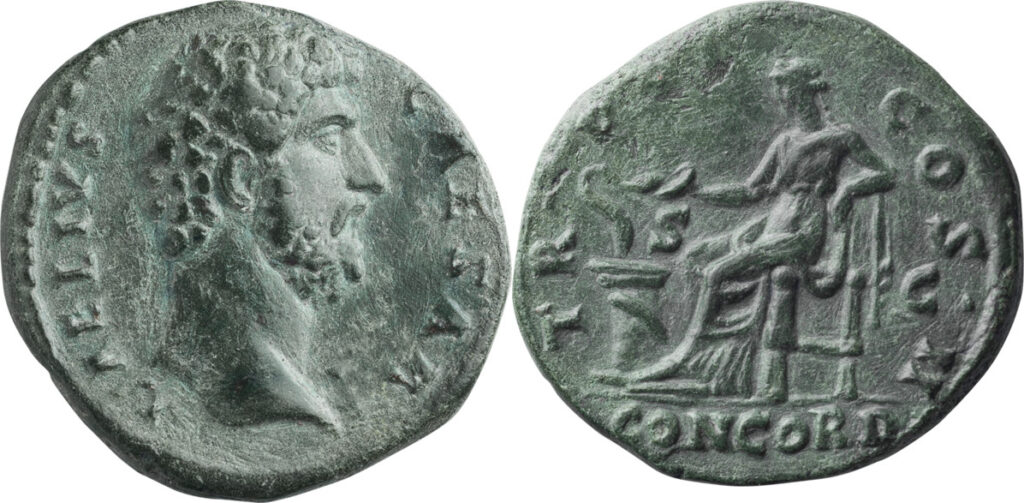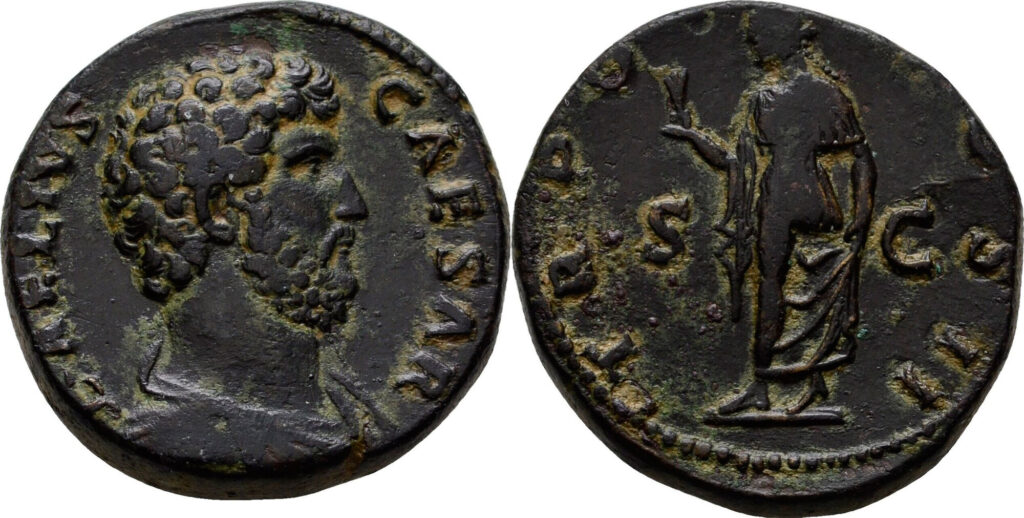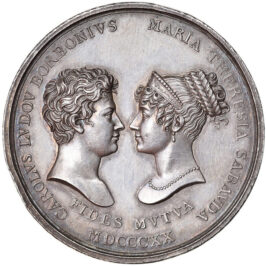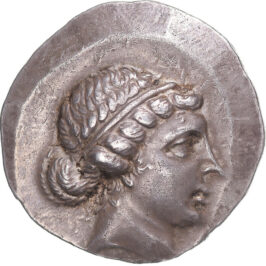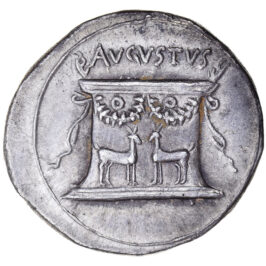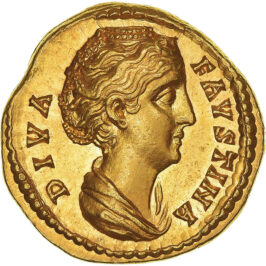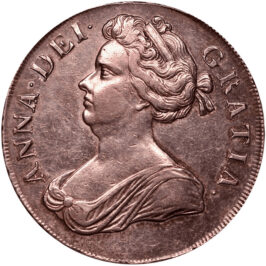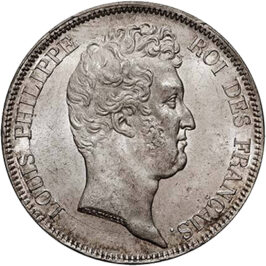Lucius Aelius Caesar, born Lucius Ceionius Commodus in 101 AD, is a figure of both promise and tragedy in Roman imperial history.
Best known as the first adopted heir of Emperor Hadrian, Aelius’s story is one of rapid political ascent cut short by fate.
Despite being largely unknown prior to his adoption, Hadrian chose him in 136 AD over other more established candidates, possibly due to Aelius’s senatorial background, refined demeanor, and rumored charm.
Upon adoption, Lucius Ceionius Commodus became Lucius Aelius Caesar, a symbolic transformation marking his transition from nobility to near-imperial authority. He was given command of the Danube legions and named consul in 137 AD, a clear signal of Hadrian’s intention for him to succeed the throne.
Unfortunately, Aelius’s time as heir was short. He was reportedly ill for much of his final year, and on January 1, 138 AD—before he could ascend the throne—he died of a hemorrhage.
His unexpected death forced Hadrian to adopt a new heir, Titus Aurelius Fulvus Boionius Arrius Antoninus, who would become Emperor Antoninus Pius.
As part of this succession plan, Hadrian required Antoninus to adopt Marcus Aurelius and Lucius Verus, thus creating a unique multi-generational line of adopted emperors known for their relative stability and philosophical governance.
Though Aelius never ruled, his brief moment in the imperial spotlight had a lasting impact. His adoption paved the way for a more deliberate and thoughtful succession strategy in Rome, contrasting with the more tumultuous transitions of previous emperors.
His son, Lucius Verus, eventually became co-emperor with Marcus Aurelius, keeping Aelius’s legacy partially alive in the annals of Roman power.
Aelius remains a symbol of what might have been—an emperor-in-waiting whose life ended before his potential could be realized. His story illustrates both the fragility of imperial plans and the far-reaching consequences of succession in ancient Rome.
Roman Empire (137) AELIUS AS CAESAR, 136-138 – AE Sestertius
16,470.00 US$
Weight 26,51gr. | Bronze Ø 31mm.
Grade: cf. Numismatica Genevensis SA, auction 7, lot 365
Obv. Bust of Lucius Aelius Caesar, bare, right, surrounded by the legend L AELIVS CAESAR
Rev. Concordia, draped, seated left, holding patera in right hand and resting left arm on cornucopiae set on base, S – C ascross field, surrounded by the legend TR POT COS II, CONCORD in exergue “He was a man of joyous life and well versed in letters. In the palace his stay was but a short one but he was considerate of his family, well-dressed, elegant in appearance, a man of regal beauty, with a countenance that commanded respect, a speaker of unusual eloquence, deft at writing verse, and, moreover, not altogether a failure in public life.” – Historia Augusta
Aelius was born on 13 Januari 101 with the name Lucius Ceionius Commodus. His father, also named Lucius Ceionius Commodus (the author of the Augustan History adds the cognomen Verus), was consul in 106, and his paternal grandfather, also of the same name, was consul in 78. His paternal ancestors were from Etruria, and were of consular rank.
His mother was a surmised but otherwise undocumented Roman woman named Ignota Plautia. The Augustan History states that his maternal grandfather and his maternal ancestors were of consular rank. Before 130, the younger Lucius Commodus married Avidia Plautia. Four children were born, among which Lucius Ceionius Commodus the younger, which we know as the later emperor Lucius Verus.
For a long time, the emperor Hadrian had considered his brother-in-law Lucius Julius Ursus Servianus as his unofficial successor.
As Hadrian’s reign drew to a close, however, he changed his mind. Although the emperor certainly thought Servianus capable of ruling as an emperor after Hadrian’s own death, Servianus, by now in his nineties, was clearly too old for the position. Hadrian’s attentions turned to Servianus’ grandson, Gnaeus Pedanius Fuscus Salinator II. Hadrian promoted the young Salinator, his great-nephew, gave him special status in his court, and groomed him as his heir.
However, in late 136, Hadrian almost died from a haemorrhage. Convalescent in his villa at Tivoli, he decided to change his mind, and selected Lucius Ceionius Commodus as his new successor, adopting him as his son. Although Lucius had no military experience, he had served as a senator, and had powerful political connections however, he was in poor health.
As part of his adoption, Lucius Ceionius Commodus took the name Lucius Aelius Caesar. After a year’s stationing on the Danube frontier, Aelius returned to Rome to make an address to the senate on the first day of 138. The night before the speech, however, he grew ill, and died of a haemorrhage late the next day. The prevailing modern view is that Aelius had, in fact, been suffering from Tuberculosis, one of the most dominant diseases in the ancient world and one that affected members of all classes. Hadrian put forward a remarkable new plan for the future of his dynasty, nominating not only his new successor on 24 Januari 138 – a mild-mannered senator named Aurelius Antoninus (Antoninus Pius) – but also the two after that (Marcus Aurelius and Lucius Verus), who he demanded should rule concordantly, a first in the Imperial age. cf. Numismatica Genevensis SA, auction 7, lot 365 (in xf | CHF 28.000 + 17,5%) Spectacular coin with excellent portrait of Lucius Aelius
and with attractive dark patina. Among the finest known.
Very rare in this high state of preservation. Cohen 7 | RIC 1057 | BMC 1918var. | Strack 880 | RIC vol.II, part 3, 2650
xf-
137 AD Aelius as Caesar, Gold Aureus struck under Hadrian, Concordia seated left
8,340.00 US$
Diameter: 20 mm – Weight: 7.04 g.
VF+, on a somewhat irregular flan, minor surface marks. Rare.
Catalog: RIC 443; Calicó 1444 (these dies)
ex-Harlan J. Berk stock with an old ticket circa 2010 at $8450; ex-Numismatica Ars Classica, 24 November 2006, lot 162 (8000 CHF hammer); ex-Numismatica ars Classica, 18 May 2001, lot 1868; ex-Marian A. Sinton (1927-97) collection.
ROMAN IMPERIAL Æ-Sestertius, 137, Rome; Hadrian, 117-138, for Aelius EF
4,410.00 US$
Weight: 23.33 g
Catalog: BMC 1925 Note, Coh. 37, RIC 1062,
Obv: Head right.
Rev: Pietas stands right with raised hands, altar in front.
Copy from the Fritz Rudolf Künker auction 270, Osnabrück 2015, No. 8765 and the Peus Nachf. auction 400, Frankfurt am Main 2010, No. 407. Slightly corroded, small planchet crack,
Ancient Roman 137 AD Aelius as Caesar . Middle Bronze
3,150.00 US$
Material: Bronze
Weight: 13.12 g
Not in the new RIC or other standard references.
Obv: L AELIVS – CAESAR Head bare r.
Rev: CONCORD in exergue and S – C across field, TR – PO[T] – COS – II around, Salus seated l extending patera to snake rising from altar.
The reverse type shows Salus feeding a snake, but the legend, by mistake, calls her Concordia; apparently unpublished until the appearace of this specimen at auction in 2016. Exquisite green patination, magnificent portrait. Near MS
Ex Curtis L. Clay Collection; ex CNG E381, 24 August 2016, 424.
ROMAN IMPERIAL PERIOD Sestertius Aelius, 137 ss
1,590.00 US$
Weight: 24.40g
Diameter: 29.00 mm
Catalog number: RIC 1055
About Us:
MA-Shops.com, The World’s Most Trusted Numismatic Marketplace, offers more than a million ancient, U.S. and ancient coins, along with medals, banknotes, militaria and antiquities. Our vibrant collection is offered by verified and Certified Dealers from around the world. Collectors can search, select and purchase conveniently and confidently knowing every item is authentic and guaranteed. Founded in 2005 by Joachim Schwiening, MA-Shops has offices in Germany and the US.
To become a dealer or for more information, contact us at MA-Shops.com


